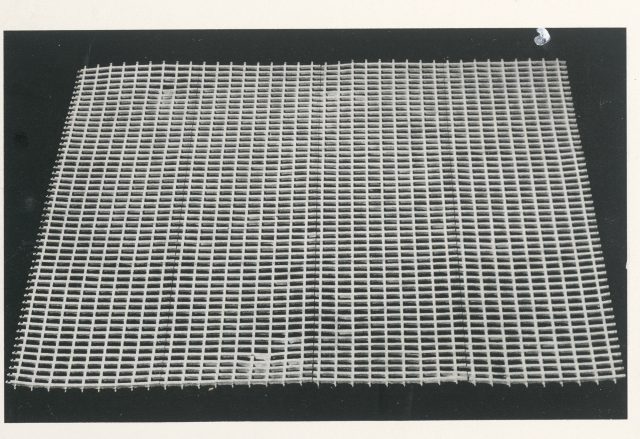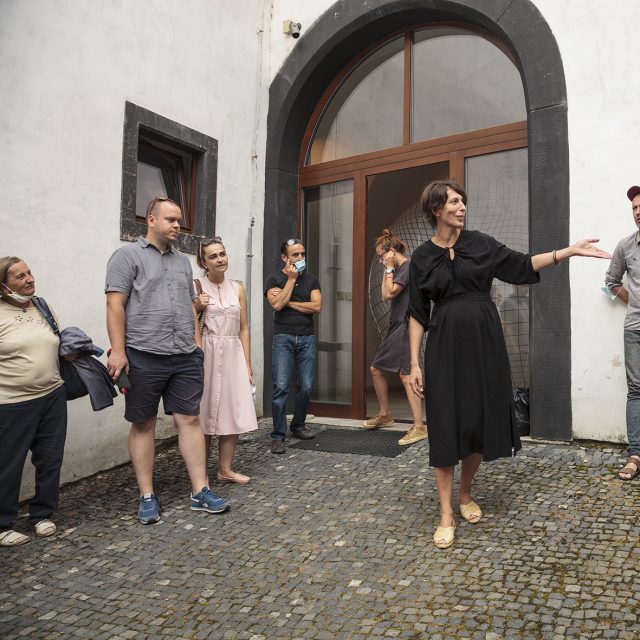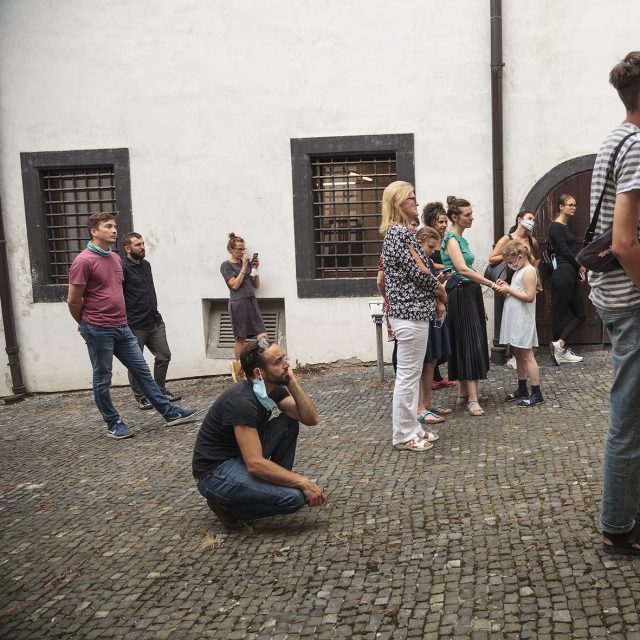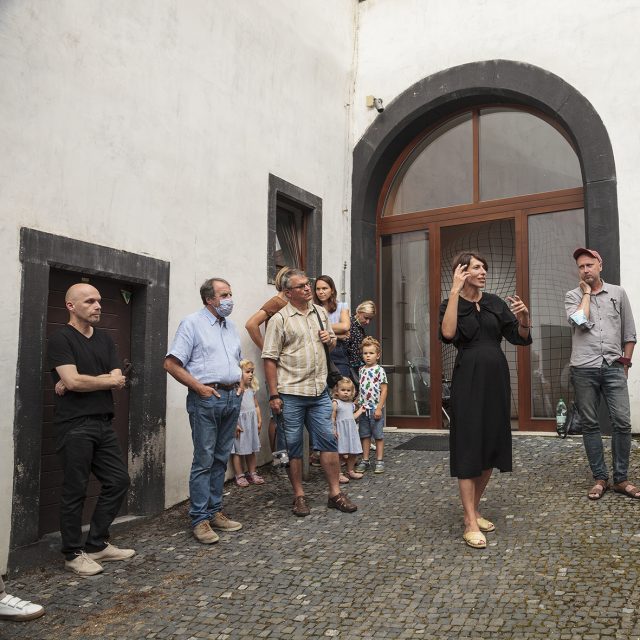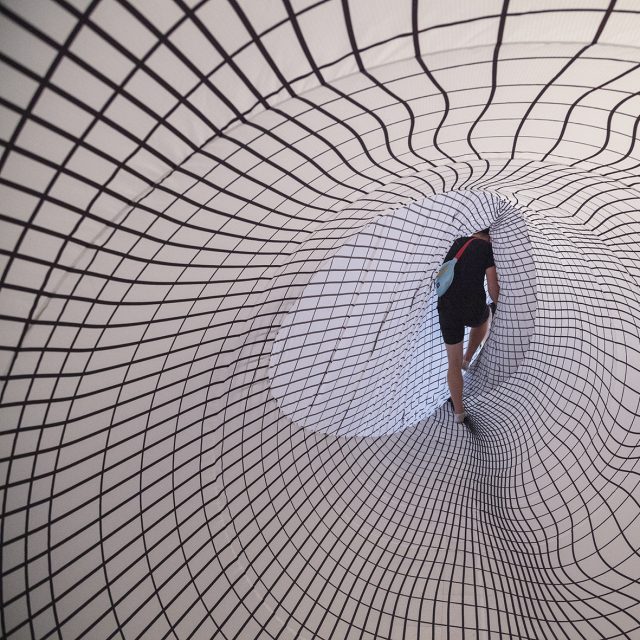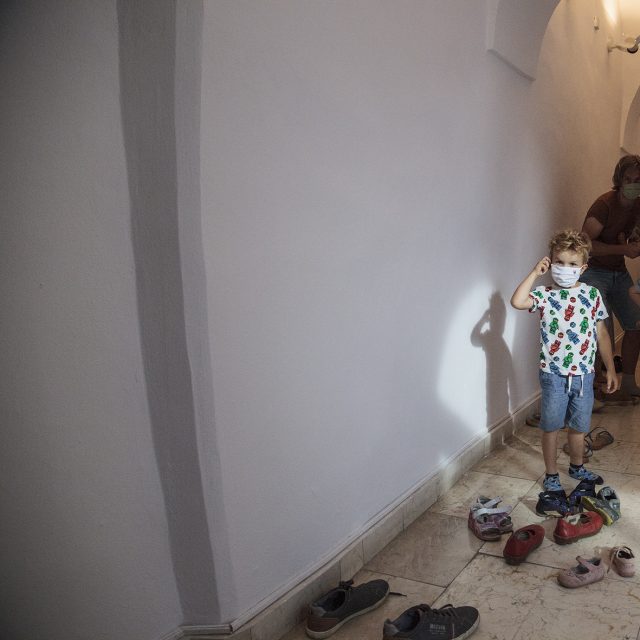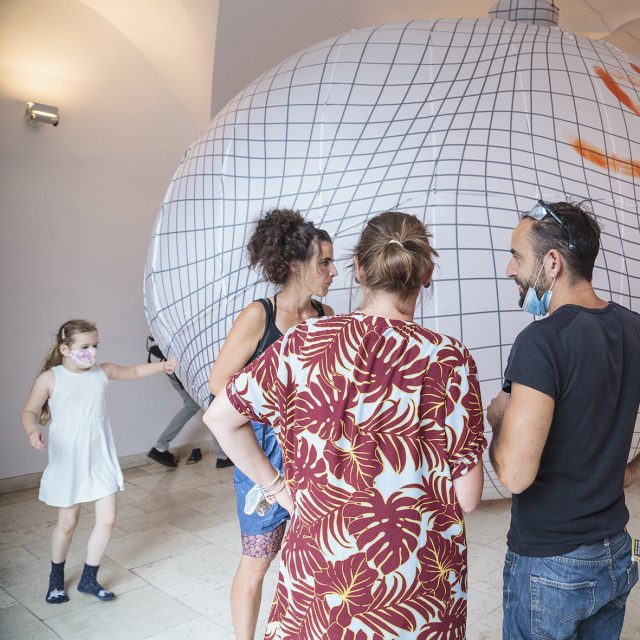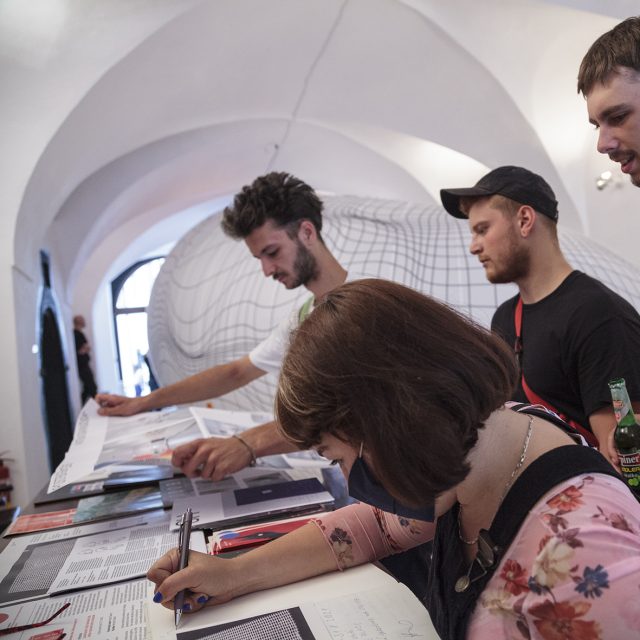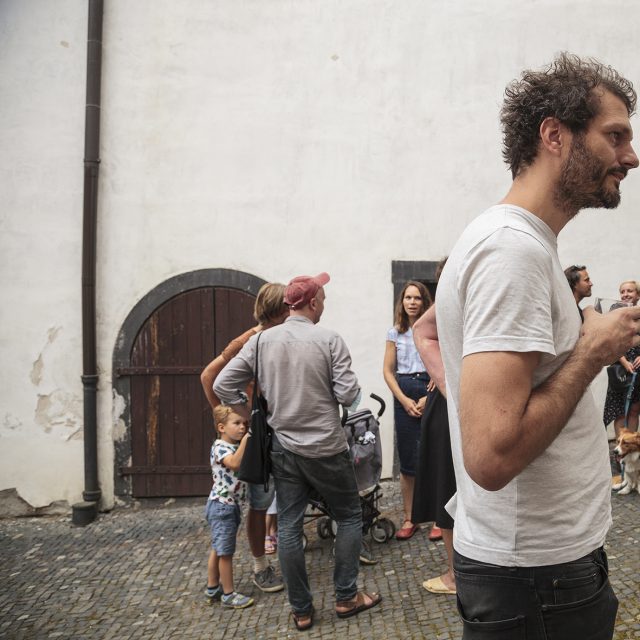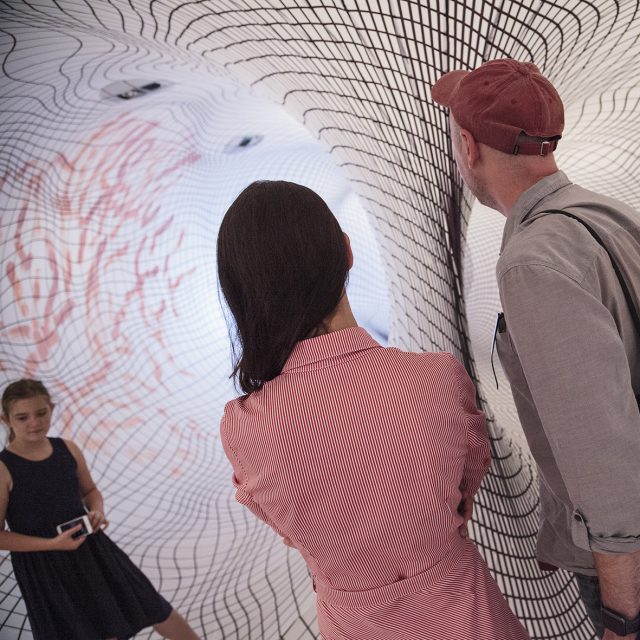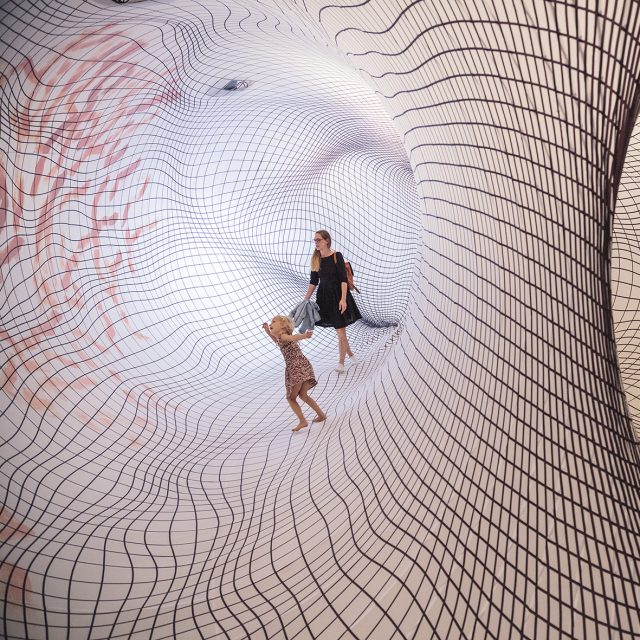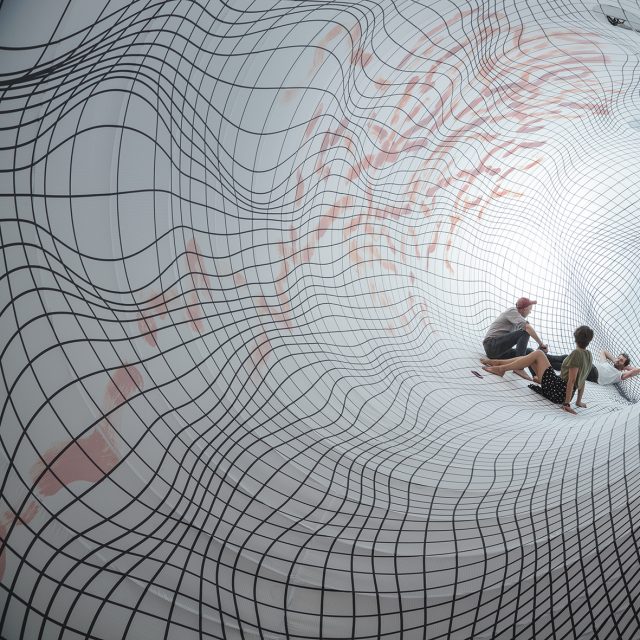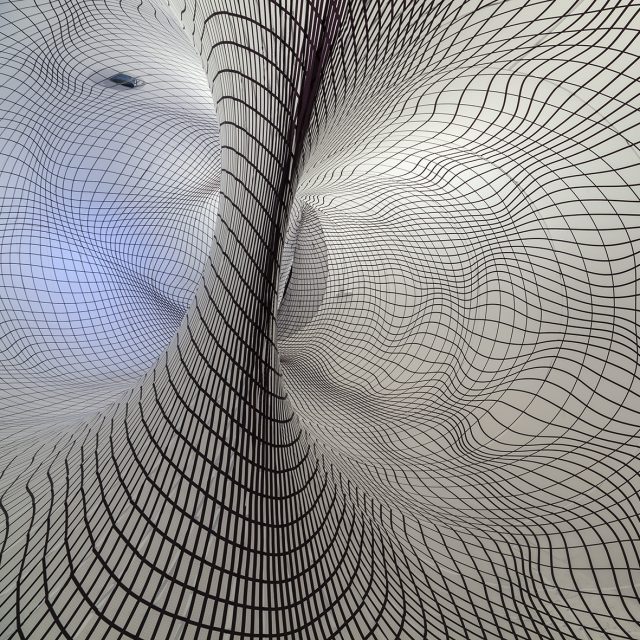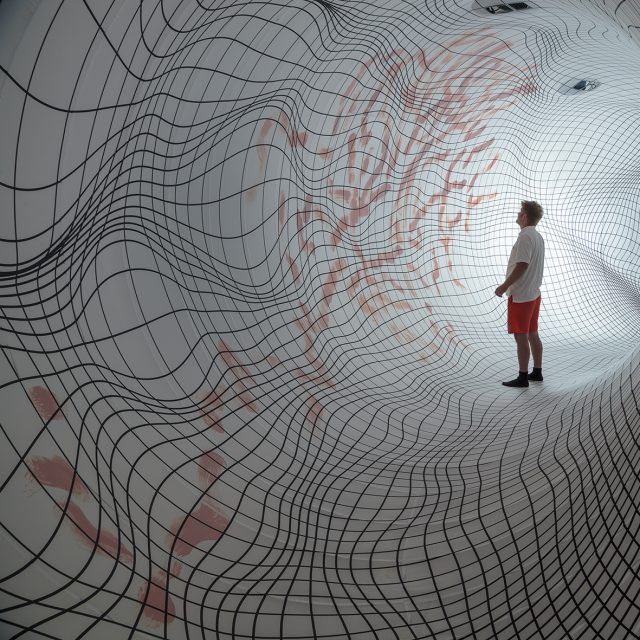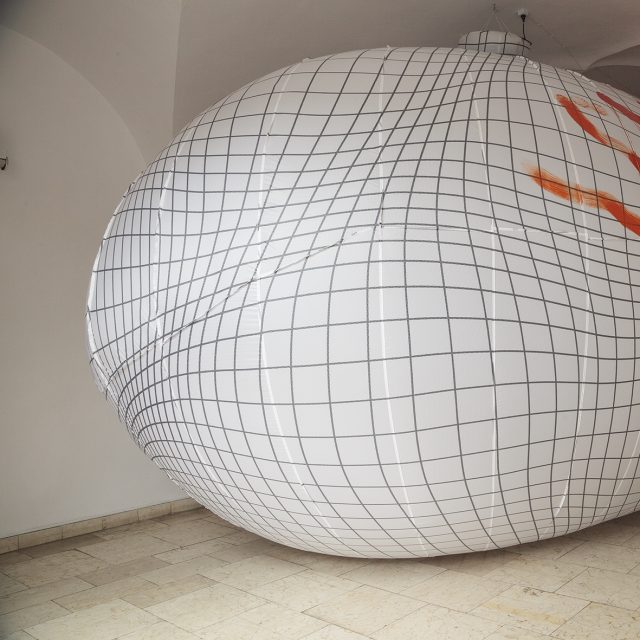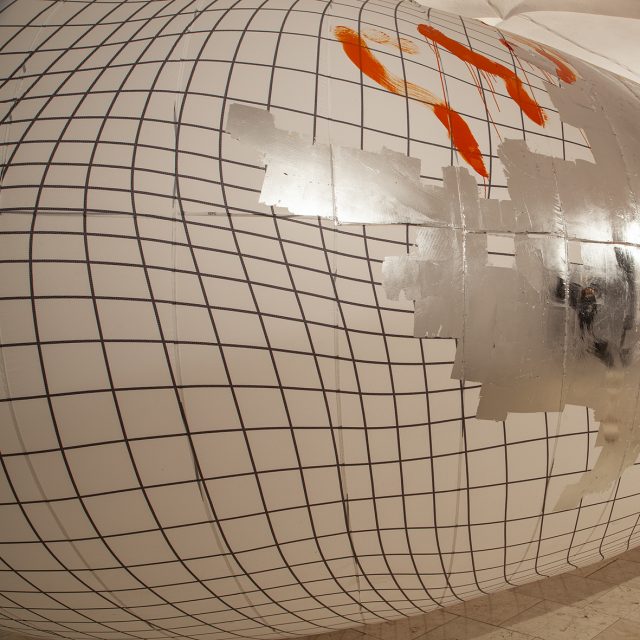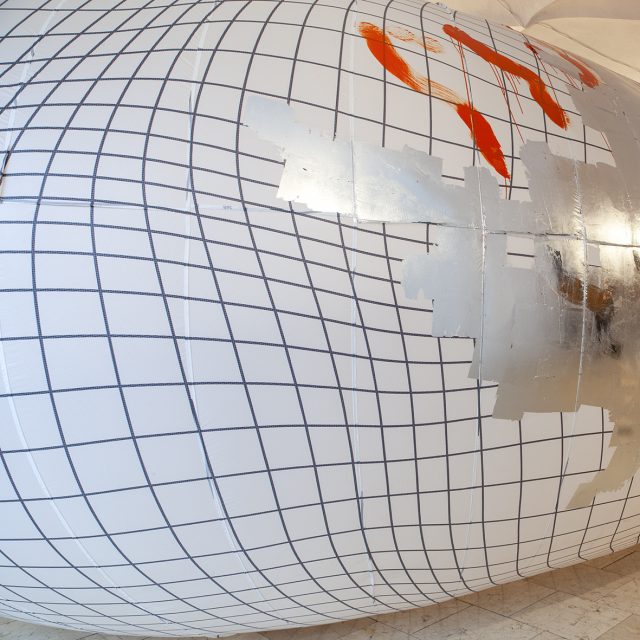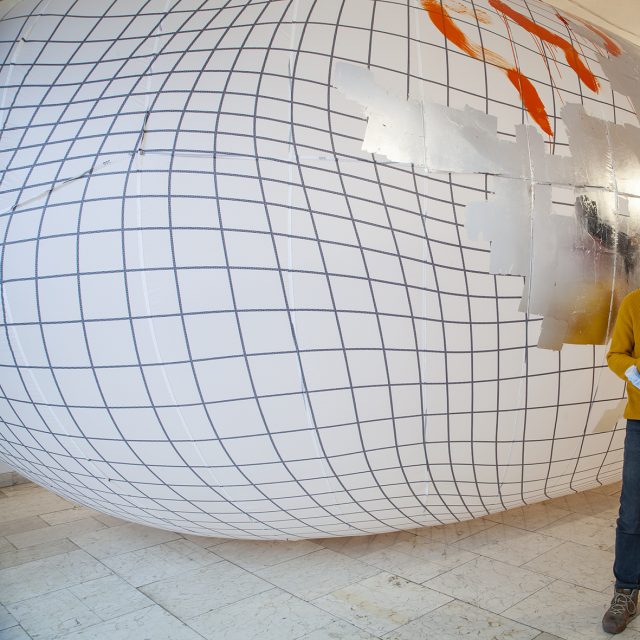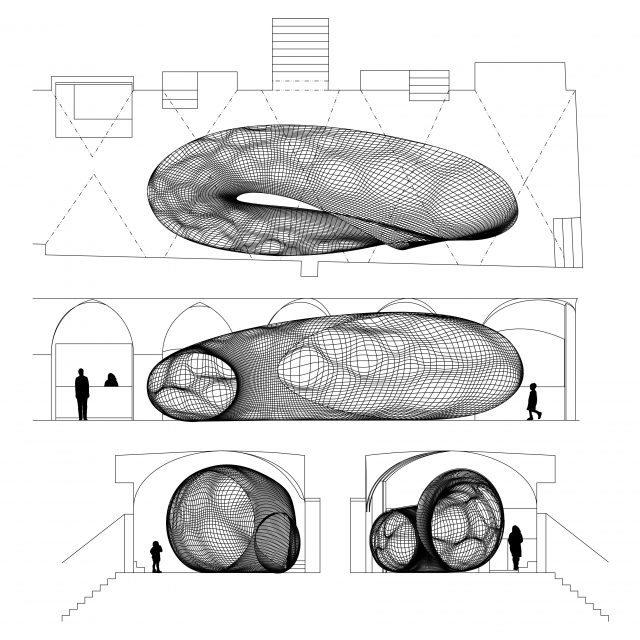The Central Slovakian Gallery in Banská Bystrica owns an extensive collection of works of an archival and project nature of the neo-avant-garde artist of the 1960s generation, Stano Filko. The format of permanent exposition from this collection HYDROZOA is not conceived traditionally – as a closed and finished exposition, but is of a variable nature according to the changing program. In Central Slovakian Gallery, it is implemented by invited authors, who critically reconsider Filko’s radical concepts and update his legacy for the present in autonomous art projects. The program, the aim of which is not a commodification, but the expansion of knowledge about Filko’s monumental work, was made available to the public by the introductory part in 2017. The fourth part, realized in the manner of the so-called Bauhütte, in a common author‘s concept of graphic designer Jan Čumlivski (CZ), artist František Demeter (SK) and architect Jakub Kopec (CZ), is a site-specific spatial installation entitled Space Is the Place.
This evocative installation follows Filko’s iconic inflatable environments (see Cosmos or Breathing) from the late 1960s and their analogies in the so-called soft architecture, which was realized on an experimental level in the 1960s and 1970s in the cultural context of hippie counter-culture and politically in an anarchist rather than modernist tradition, whether it was mobile inflatable objects, capsules and cells, or the urbanism of endless open structures, e.g. nomadic cities. The temporary historical architecture of inflatable tents, the mainstream outcome of which we now know also from the compilation architectures of popular music festivals, dealt very comprehensively with environmental relations and community building. Its material qualities expressed by softness were examined not only for its material ductility, but in reaction to touch and tension, for example because of the flexibility of the given system and its sensitivity, respectivelly its ability to responsive answer.
Relatedly, the environment Space Is the Place originated as a topological model of a continuous surface area and its spatial relations. It is based on the properties of the so-called Klein bottle (originally Kleinsche Fläche or Flasche) known from the mathematical theory of topology as the idea of mutually continuous reproductions of geometric bodies and their topological properties, which remain unchanged despite possible deformations. It is also schematically described as a non-orientable object, which is a spatial expression of an infinite surface area of a Möbius strip, where a loop closed with a side rotation of 180º has only one surface, so it is not distinguishable what is outside and what (or which point of the space) is inside. As a two-dimensional geometric shape, it can be constructed only in 4D conditions, not 3D Euclidean space. However, the architecture of the interactive environment Space Is the Place is a soft surface area, the territory of which is not defined by solid walls, but by the sensual experience of the spectator.
Klein’s bottle also resembles the shape of alchemical vessels in which the symbolism of all numbers is to be contained. Filko also dealt with that extensively. To his so-called psychophilosophical system of holistic thinking in free associations he has eclecticized several numerological structures. Space Is the Place is a quote from the name of an early afrofuturistic sci-fi film from 1972 and refers to Filko’s older generation contemporary, the experimental musician Sun Ra, who is one of the particularly inspiring figures in the contemporary cultural aesthetics of Afrofuturism. In the post-secular and post-conceptual frameworks of the digital age, it is extraordinary that, like Stano Filko, Sun Ra was also fascinated by the collective imagination and the so-called fictional language of shared ideas, as described by e.g. Y. N. Harari. Sun Ra in his so-called cosmic philosophy visionary called people to recognize the myth; claimed that everything unknown is part of the myth and called for mythocracy instead of a theocracy or democracy…
Mira Keratová
“According to Bergson, we do not find things and places in the space, but space in things and places. We found the space of Filko’s Cosmos and started operating with it further. We complicate the ideal central space. When we turn one of its inlet openings upside down, stretch it and glue it to the other, we get a two-dimensional geometric shape – a Klein bottle. This variety has specific properties compared to the initial shape. Its surface is reversibly continuous, and it is not clear which of its sides is the back side and which one is the front. In order to retain its topological properties during subsequent transformations, it must remain continuous. In this way, by further stretching and shrinking, we adapted our new topological space to the space of the entrance to the Central Slovakian Gallery, a former Maßhaus. The installation fills it and at the same time it creates its continuation, which winds up into itself. It is soft, inflatable like Filko’s Cosmos, but it also contains many other references. It refers to Kiesler and his endless house, to the spaces of soft radical architecture of the 1960s and 1970s, but also to the digital spaces of the turn of the 20th and 21st centuries. To avoid excessive perfection of the new object, or, conversely, controversial quality of the product, we problematize the installation again. Its surface is covered with a grid, which is based on the geometry of the object and at the same time it allows us to further its optical transformation. In order for the grid to maintain its continuity as well as the entire object, we can further stretch or contract it, but we should not break it. In this way, the grid responds to selected points of the space that carry different charges. In the end, Čumlivski reacts uncontrollably to this process of a computer-controlled topological transformation, using the surface of the object as an outline for graphic intervention. ”
Jakub Kopec
///////////
Title of the exhibition: HYDROZOA, Stála expozícia Stana Filka v SSG / Časť štvrtá, Space Is the Place
Venue: Bethlenov dom /foyer/, Dolná 8, Banská Bystrica
Authors: Jan Čumlivski, František Demeter, Jakub Kopec
Curator: Mira Keratová
Translation: Zuzana Szabóová
Exhibition opening: 4. 8. 2020 o 17:00
